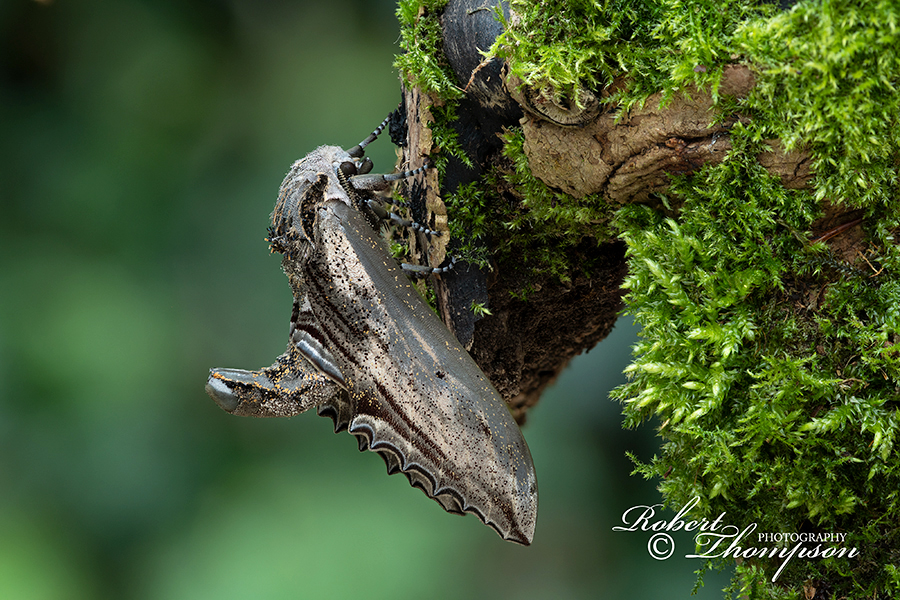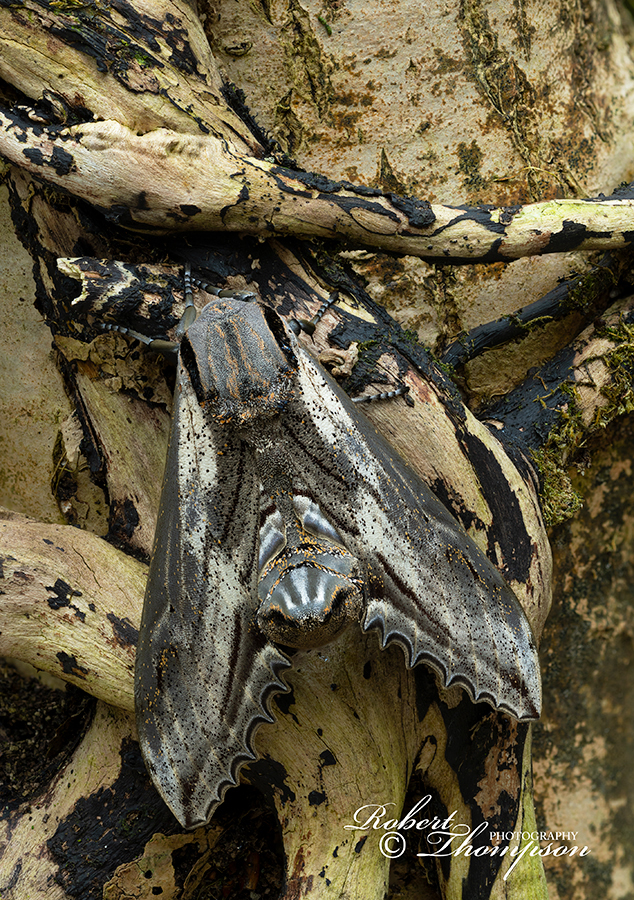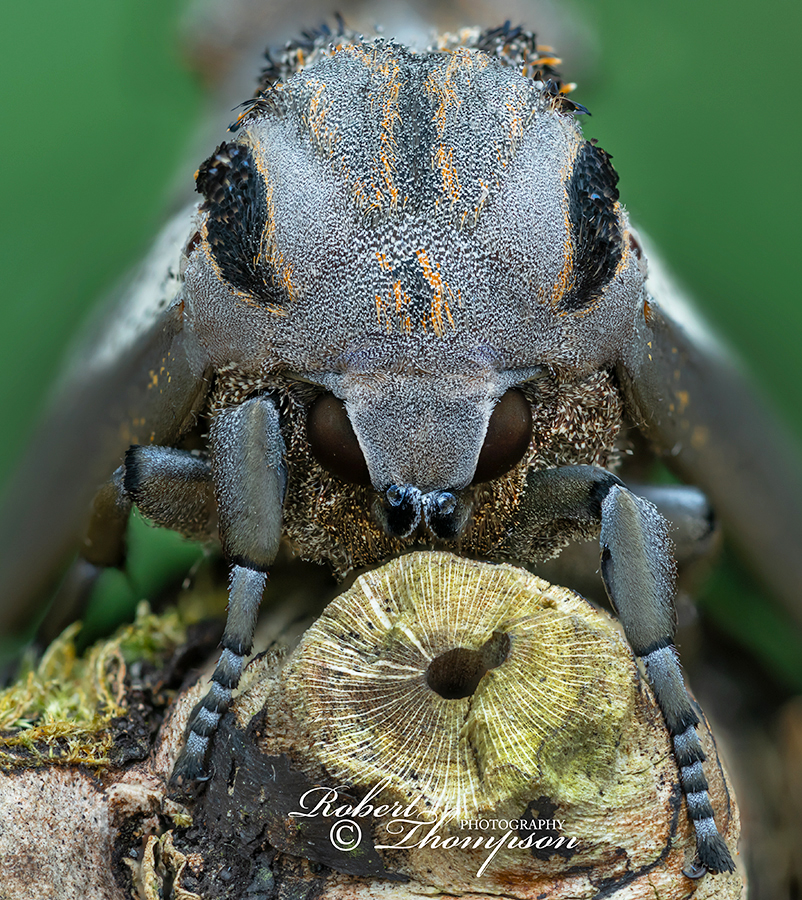Apple Hawk-moth Langia zenzeroides formosana
As many of you know, Insects especially Moths and Dragonflies have always been of great interest to me. I have spent many years studying both groups in particular Hawk-moths and Saturniidae (Silkmoths).
I have worked closely with a number of entomologists in a professional capacity from around the world documenting photographically these exceptional insects. In between other photographic commitments, I try, whenever I can, to make time to travel and photograph these wonderful creatures.

Apple Hawk-moth Langia zenzeroides ssp. formosana
Nikon D850, 200mm micro nikkor lens, @ F/11, ISO 200 tripod.
The Apple Hawk-moth Langia zenzeroides formosana is a large beautiful endemic Hawk-moth from the mountains of Taiwan.
The moth, unlike most other hawk-moths, has an unusual resting posture where its forewings are swept forward (penthouse-wise) covering the upper aspect of the abdomen exposing the characteristic elevated tip which is synonymous with this species.

Apple Hawk-moth Langia zenzeroides ssp. formosana
Nikon D850, 200mm micro nikkor lens, @ F/11-16, ISO 200 tripod.
Little is known about the early aspects of its life history. Adults are rather sluggish during the day but if alarmed they make a hissing or squeaking sound similar to that of the Death’s head Hawk-moth. Acherontia atropos.
The moths have vestigial mouthparts and therefore do not feed in the adult stage.

Apple Hawk-moth Langia zenzeroides ssp.formosana showing the head and large compound eyes.
Nikon D850, 105mm micro nikkor lens + 1.7 converter, @ F/16, ISO 400 tripod.
The fully-grown larva is impressive, reaching up to 12cm in length and apple-green in colour when fully mature. The larva rests on the underside of leaves and twigs. When threatened, it thrashes from side to side making a hissing sound.

Apple Hawk-moth Langia zenzeroides ssp. formosana fully mature larva.
Nikon D850, 200mm micro nikkor lens, @ F/11, ISO 200 tripod.
The larva pupates below ground where it spends the winter months before emergence the following year.

